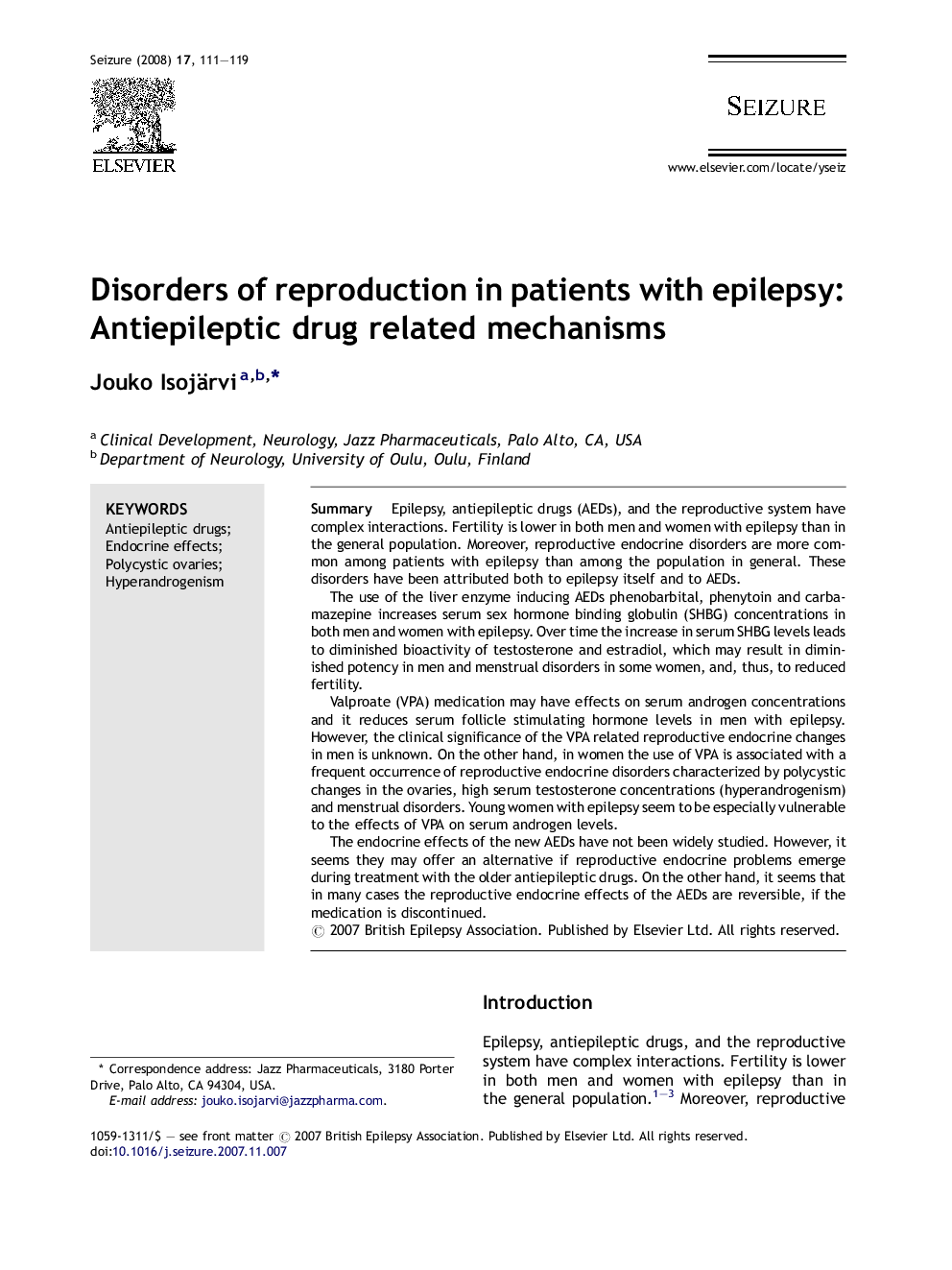| Article ID | Journal | Published Year | Pages | File Type |
|---|---|---|---|---|
| 340758 | Seizure | 2008 | 9 Pages |
SummaryEpilepsy, antiepileptic drugs (AEDs), and the reproductive system have complex interactions. Fertility is lower in both men and women with epilepsy than in the general population. Moreover, reproductive endocrine disorders are more common among patients with epilepsy than among the population in general. These disorders have been attributed both to epilepsy itself and to AEDs.The use of the liver enzyme inducing AEDs phenobarbital, phenytoin and carbamazepine increases serum sex hormone binding globulin (SHBG) concentrations in both men and women with epilepsy. Over time the increase in serum SHBG levels leads to diminished bioactivity of testosterone and estradiol, which may result in diminished potency in men and menstrual disorders in some women, and, thus, to reduced fertility.Valproate (VPA) medication may have effects on serum androgen concentrations and it reduces serum follicle stimulating hormone levels in men with epilepsy. However, the clinical significance of the VPA related reproductive endocrine changes in men is unknown. On the other hand, in women the use of VPA is associated with a frequent occurrence of reproductive endocrine disorders characterized by polycystic changes in the ovaries, high serum testosterone concentrations (hyperandrogenism) and menstrual disorders. Young women with epilepsy seem to be especially vulnerable to the effects of VPA on serum androgen levels.The endocrine effects of the new AEDs have not been widely studied. However, it seems they may offer an alternative if reproductive endocrine problems emerge during treatment with the older antiepileptic drugs. On the other hand, it seems that in many cases the reproductive endocrine effects of the AEDs are reversible, if the medication is discontinued.
